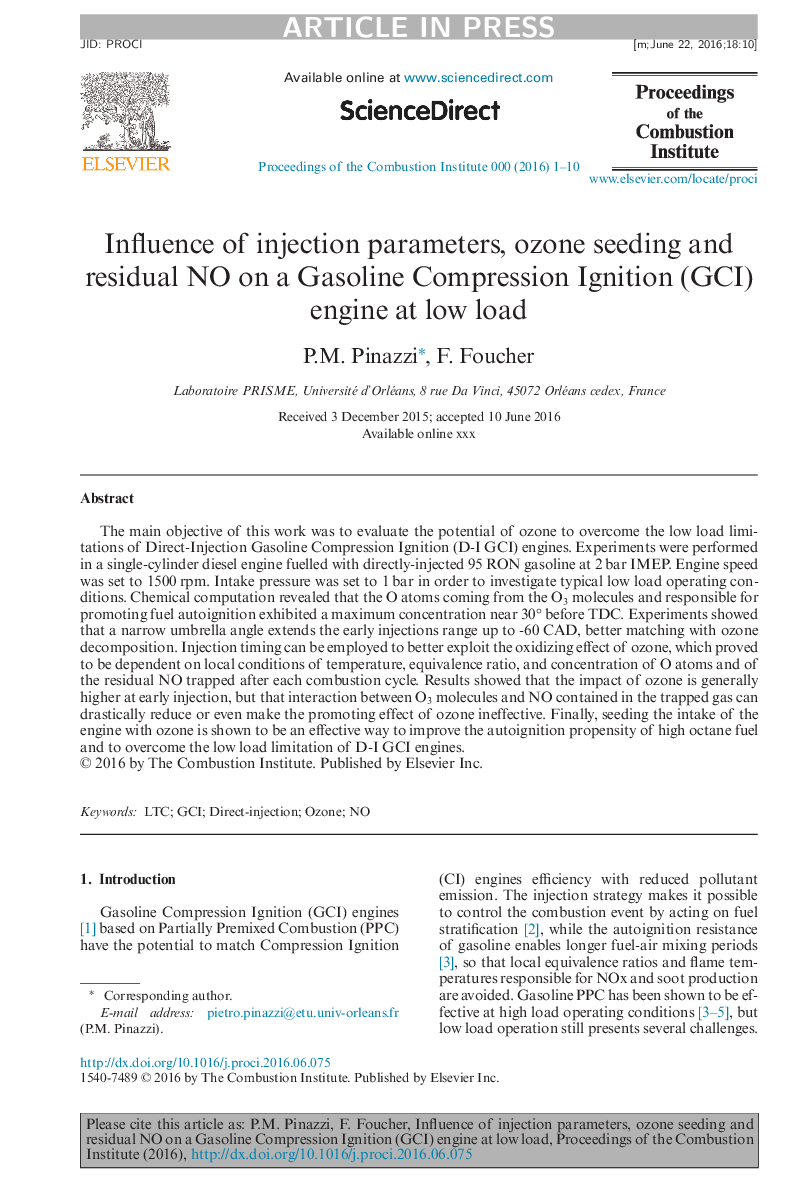| کد مقاله | کد نشریه | سال انتشار | مقاله انگلیسی | نسخه تمام متن |
|---|---|---|---|---|
| 4915422 | 1427915 | 2017 | 10 صفحه PDF | دانلود رایگان |
عنوان انگلیسی مقاله ISI
Influence of injection parameters, ozone seeding and residual NO on a Gasoline Compression Ignition (GCI) engine at low load
دانلود مقاله + سفارش ترجمه
دانلود مقاله ISI انگلیسی
رایگان برای ایرانیان
کلمات کلیدی
موضوعات مرتبط
مهندسی و علوم پایه
مهندسی شیمی
مهندسی شیمی (عمومی)
پیش نمایش صفحه اول مقاله

چکیده انگلیسی
The main objective of this work was to evaluate the potential of ozone to overcome the low load limitations of Direct-Injection Gasoline Compression Ignition (D-I GCI) engines. Experiments were performed in a single-cylinder diesel engine fuelled with directly-injected 95 RON gasoline at 2 bar IMEP. Engine speed was set to 1500 rpm. Intake pressure was set to 1 bar in order to investigate typical low load operating conditions. Chemical computation revealed that the O atoms coming from the O3 molecules and responsible for promoting fuel autoignition exhibited a maximum concentration near 30° before TDC. Experiments showed that a narrow umbrella angle extends the early injections range up to -60 CAD, better matching with ozone decomposition. Injection timing can be employed to better exploit the oxidizing effect of ozone, which proved to be dependent on local conditions of temperature, equivalence ratio, and concentration of O atoms and of the residual NO trapped after each combustion cycle. Results showed that the impact of ozone is generally higher at early injection, but that interaction between O3 molecules and NO contained in the trapped gas can drastically reduce or even make the promoting effect of ozone ineffective. Finally, seeding the intake of the engine with ozone is shown to be an effective way to improve the autoignition propensity of high octane fuel and to overcome the low load limitation of D-I GCI engines.
ناشر
Database: Elsevier - ScienceDirect (ساینس دایرکت)
Journal: Proceedings of the Combustion Institute - Volume 36, Issue 3, 2017, Pages 3659-3668
Journal: Proceedings of the Combustion Institute - Volume 36, Issue 3, 2017, Pages 3659-3668
نویسندگان
P.M. Pinazzi, F. Foucher,